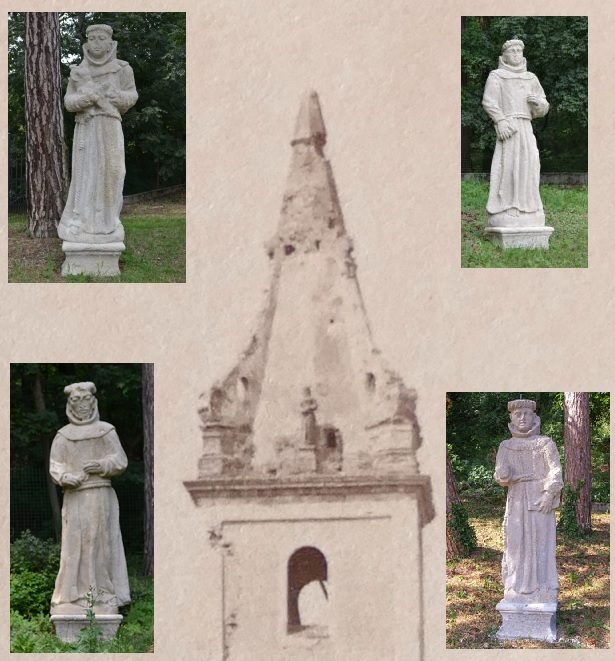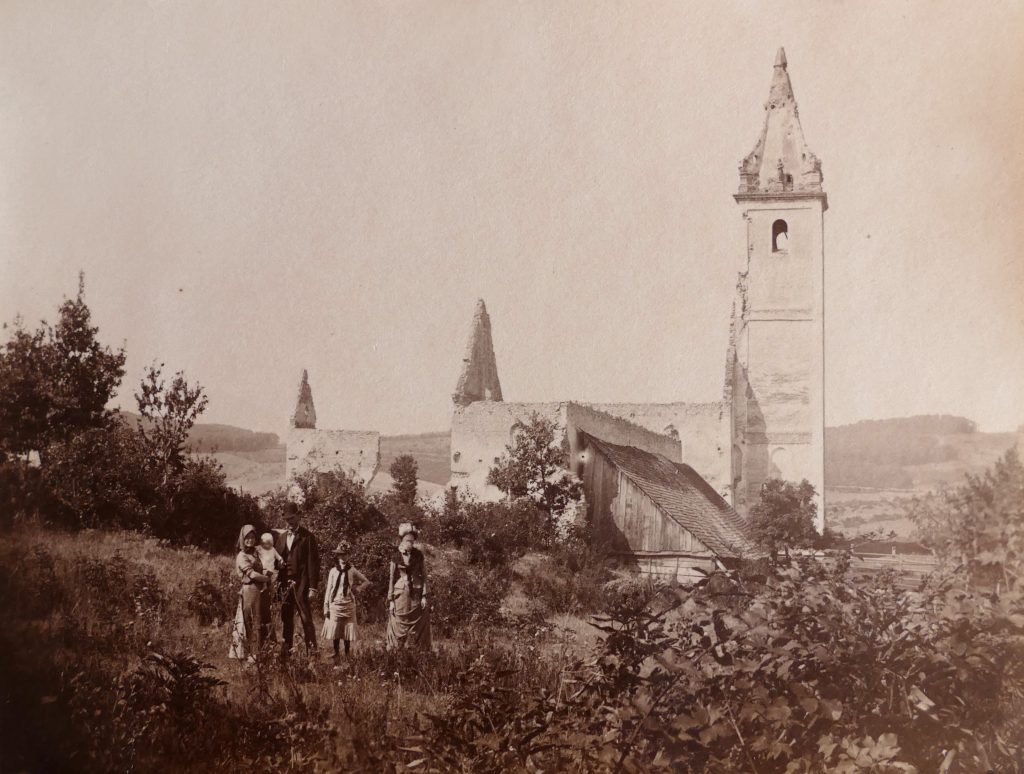In 2018, a real gem for our organization was discovered. In the Slovak National Archive in Bratislava, the oldest surviving photograph (so far) of Katarínka, dated 1904, was discovered. The photo is located in the photo album of the Pálffy family, who are probably also present in the photo itself. It is an irreplaceable source of information for our organization, as the photograph provided us with new, previously unknown facts about Katarínka. This photograph was first presented internally to members and associates of our organization O.Z. Katarínka, during the celebrations of the 400th anniversary of Katarínka. But now we are making it available to the general public for the first time.
The timing of the photo (1904) is really fortunate for us. This is because only a year later after the photo was taken, in 1905, the four statues which were originally placed at the top of the tower, were thrown down from the top of the tower into piles of wood and hay and then transported to the vicinity of the Pálffy tomb at the cemetery in Smolenice, where they still can be found to this very day. So thanks to this photo, we can now see that the statues were not on the corners of the tower, as originally thought, but were located in the middle of its walls instead.
These three interesting parts of Katarínka can be seen on the photo, which are not standing anymore:
- Brick roof of the tower with holes and decorative volutes on the edges.
- Gable of the presbytery on the far left of the photo and the eastern wall of the presbytery with the imprint of the monastery roof. Today, nothing of them stands.
- The northern wall of the monastery (to which wooden stables are added on the photo) – only a 1 meter high wall remains.

Originally it was also assumed that the shape of the roof was completely different. One of the assumptions was the so-called pear-shaped roof, like most churches in Trnava have, but these ideas were wrong. Thanks to this photograph, it is possible to update the digital visualizations of what the whole church and monastery might have looked like. The photograph also provides administrative advantages in case of possible reconstruction of these no longer standing parts, as the authorities usually have problems allowing the reconstruction of parts where it is not fully documented how they originally appeared. However, the reconstruction of the roof is not considered at the moment and probably even in the future.
Katarínka thanks Tomáš Haviar for providing the photo.
For extra curious, you can download the photo in full size, here on this link.


